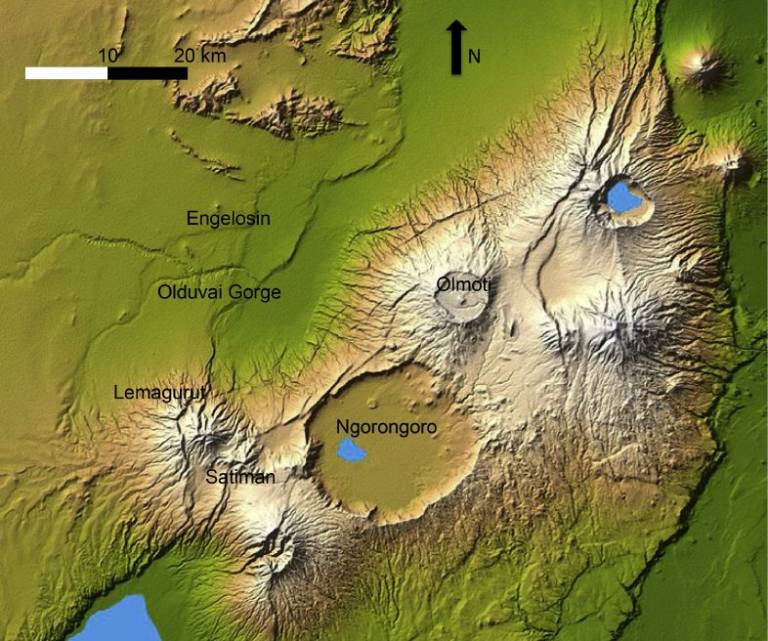Hominin raw material procurement in the Oldowan-Acheulean transition at Olduvai Gorge
12 January 2018
The lithic assemblages at the Oldowan-Acheulean transition in Bed II of Olduvai Gorge, Tanzania, represent a wide variety of raw materials reflecting both the diversity of volcanic, metamorphic, and sedimentary source materials available in the Olduvai basin and surroundings and the preferences of the tool-makers.
 A geochemical and petrographic systematic analysis of lava-derived archaeological stone tools, combined with textural and mineralogical characterization of quartzite, chert, and other metamorphic and sedimentary raw materials from two Middle and Upper Bed II sites, has enabled us to produce a comprehensive dataset and characterization of the rocks employed by Olduvai hominins, which is used here to establish a referential framework for future studies on Early Stone Age raw material provenancing. The use of rounded blanks for most lava-derived artifacts demonstrates that hominins were accessing lava in local stream channels. Most quartzite artifacts appear to derive from angular blocks, likely acquired at the source (predominantly Naibor Soit hill), though some do appear to be manufactured from stream-transported quartzite blanks. Raw material composition of the EF-HR assemblage indicates that Acheulean hominins selected high-quality lavas for the production of Large Cutting Tools. On the other hand, the HWK EE lithic assemblage suggests that raw material selectivity was not entirely based on rock texture, and other factors, such as blank shape and availability of natural angles suitable for flaking, played a major role in Oldowan reduction sequences.
A geochemical and petrographic systematic analysis of lava-derived archaeological stone tools, combined with textural and mineralogical characterization of quartzite, chert, and other metamorphic and sedimentary raw materials from two Middle and Upper Bed II sites, has enabled us to produce a comprehensive dataset and characterization of the rocks employed by Olduvai hominins, which is used here to establish a referential framework for future studies on Early Stone Age raw material provenancing. The use of rounded blanks for most lava-derived artifacts demonstrates that hominins were accessing lava in local stream channels. Most quartzite artifacts appear to derive from angular blocks, likely acquired at the source (predominantly Naibor Soit hill), though some do appear to be manufactured from stream-transported quartzite blanks. Raw material composition of the EF-HR assemblage indicates that Acheulean hominins selected high-quality lavas for the production of Large Cutting Tools. On the other hand, the HWK EE lithic assemblage suggests that raw material selectivity was not entirely based on rock texture, and other factors, such as blank shape and availability of natural angles suitable for flaking, played a major role in Oldowan reduction sequences.
Hominin raw material procurement in the Oldowan-Acheulean transition at Olduvai Gorge
Lindsay J. McHenry, Ignacio de la Torre
DOI: 10.1016/j.jhevol.2017.11.010
 Close
Close

